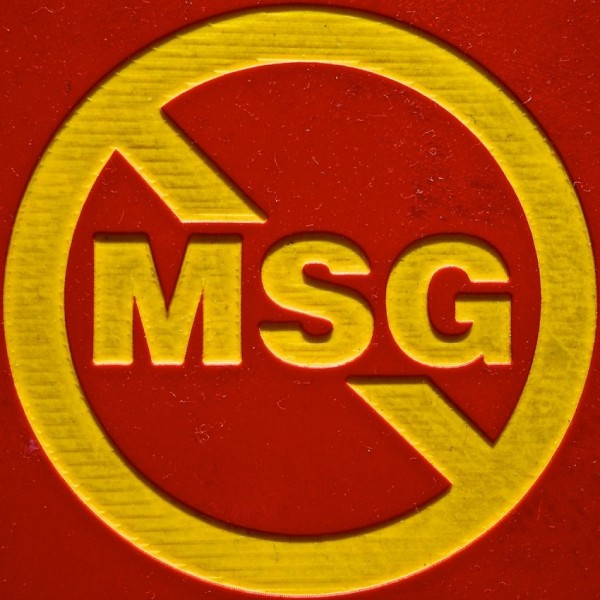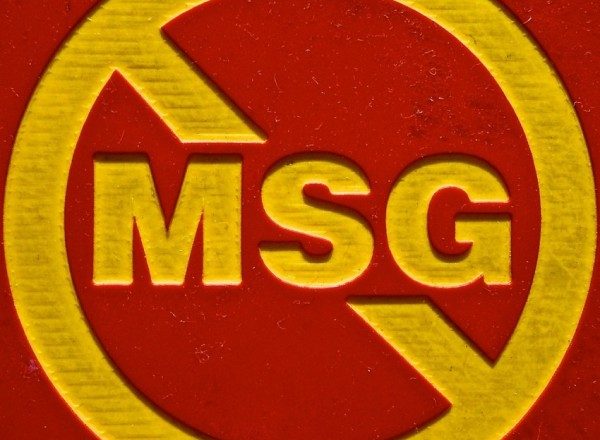 Monosodium glutamate (MSG) is used in nearly all foods as a preservative or flavor enhancer. A toxic food additive, MSG creates a wide constellation of symptoms forcing victims to seek relief from side effects and allergic reactions. Minute amounts of MSG are found in everything that’s processed, even vegetables and organic milk. These relatively benign quantities are activated by heating during processing becoming noxious, and in some cases poisonous — causing dangerous health reactions when consumed.
Monosodium glutamate (MSG) is used in nearly all foods as a preservative or flavor enhancer. A toxic food additive, MSG creates a wide constellation of symptoms forcing victims to seek relief from side effects and allergic reactions. Minute amounts of MSG are found in everything that’s processed, even vegetables and organic milk. These relatively benign quantities are activated by heating during processing becoming noxious, and in some cases poisonous — causing dangerous health reactions when consumed.
Symptoms of MSG poisoning
The following are some of the symptoms you may develop from eating food laced with MSG. Headaches, numbness, dizziness, burning sensations in the neck and chest, tingling nausea, palpitations, elevated blood pressure, difficulty breathing, panic attacks, sleepiness, depression, confusion, cognitive disorder, and food cravings are common symptoms for sensitive people.
MSG can produce life-threatening, allergic reactions including hives, swelling of the face, tongue and throat preventing breathing, and causing anaphylaxis. This condition requires immediate medical attention.
Avoiding MSG
Avoid processed and packaged foods, pre-cooked soups, salad dressings and sauces. Steer clear of restaurant foods, especially salad and hot bars. Most fermented foods such as soy sauce contain high levels of MSG. Skip Chinese and Asian food unless you make it yourself or know with absolute certainty that the restaurant doesn’t use MSG. Specifically request “no MSG” when ordering and consume foods freshly prepared for you with no additional sauces.
Remedies for MSG poisoning
Cream of Tartar: Keep a small container of cream of tartar nearby. When mixed with water, cream of tartar will immediately neutralize MSG poisoning, relieving most symptoms. Cream of tartar creates an alkaline-forming environment when ingested, raising the blood pH and stabilizing the system. Mix 1/2 teaspoon in eight oz. of water and drink, or sprinkle some in a small bottle of water, shake and drink.
Homeopathic MSG: A homeopathic remedy is available made from MSG, and is useful to antidote the effects of the toxin, relieving most symptoms. Here’s how to use it:
Place one or two tiny pellets in a 1 oz. brown dropper bottle. Fill half way with distilled water and top up with vodka. Label the bottle. Grip the bottle in one hand and slap the bottom of the bottle against the palm of your other hand firmly but not hard enough to break. Slap it five times, open the bottle and take a sniff if you’re experiencing symptoms from consuming MSG. Replace the lid. This is called an olfactory dose. Take one or two doses for relief. If symptoms persist, contact a homeopath or other natural health practitioner for further treatment.
Drink water: Flush your system by drinking lots of clean water after consuming food with MSG.
MSG by any other name…
Learn the alternate names for monosodium glutamate and read labels when shopping. Unless it expressly says it’s MSG-free, assume everything processed or eat in a restaurant contains it in some form.
Here are some of the names used to refer to MSG; there are others. Yeast nutrient, calcium caseinate, sodium caseinate, textured protein, monopotassium glutamate, autolyzed yeast, yeast extract, yeast food, hydrolyzed corn gluten, natrium glutamate, hydrolyzed protein, carrageenan, maltodextrin, natural beef flavoring, natural pork flavoring, whey protein protease, malt extract, malt flavoring, natural chicken flavoring, soy protein isolate, citric acid, ultra-pasteurized, anything that’s enzyme modified, soy sauce, soy sauce extract, whey protein concentrate, stock, broth, bouillon, pectin, soy protein, soy protein concentrate, barley malt, whey protein isolate, protease enzymes, anything protein fortified, flavors and flavoring, natural flavor and flavoring, fermented foods, enzymes, seasonings.
by
Sources:
http://www.ainsworths.com/index.php
http://www.globalhealingcenter.com/nutrition/msg-toxins
Baroody, Theodore A. Alkalize or Die Page 116, Waynesville, NC, Holographic Health Press, 1991
(Photo credit: Public Domain)




